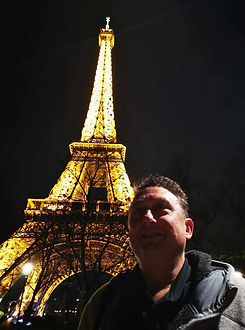

Wadlow goes to University
UCL have now examined the painting using a Hyper spectral imaging camera in various wave lengths. We would like to thank Adam Gibson, Molly Fort, and John Gilchrist for their help.
The hope was to find out more about the hidden coat of arms but that didn't really happen because of the amount of lead paint but more on that later. However, as a result of the scans we were able to see beneath the underpainting and reveal chemical signals that can tell us about colours and the various layers of the painting. The good news is that all the paints used are correct for the period circa 1595.
The results gave us new information about the reds used, the fake coat of arms and the collar. The first surprise came when we looked at the fake coat of arms. We had always assumed that it had been added later but the initial interpretation of the results shows that all the reds across the painting were added about the same time. It was also determined that although the reds weren't on the original painting they were added not long after the original portrait.
This has implications for the layers of the painting as we can now assume that anything painted on top of the red is likely to have been painted later. We still have quite a bit of unravelling to do regarding the colours and the layers.
The scans also showed us new and interesting things regarding the fancy lace collar. As we moved down through the layers of paint the fancy collar dissappeared. The implication is that the fancy lace collar was also a later addition and the original collar was much simpler and more like the Droeshout engraving.
The scans also revealed new things about the earring and the bow. If you want to see more then click on the links below to watch Stuff of Dreams on Netflix in the UK, or Picturing Shakespeare, Secrets of the Dead on PBS in America.


Wadlow goes to cambridge!

X-rays and experts
One of the first things Steven did in his quest to find the truth about tha family portrait was to turn to the experts. Steven’s first port of call was to seek the opinions of art historian Sir Roy Strong who offered a date of mid 1590s. Next Steven took the painting to the Hamilton Kerr where the portrait was examined and a date of around 1600 was given. The portrait was also x-rayed revealing that there was a good deal of overpainting under which was a coat of arms. A nonsensical coat of arms had been added in the opposite corner.
Fake coat of arms added at a later date
Over-painting had been the undoing of many a candidate painting in the past such as the Ashbourne portrait owned by the Folger library in America which was originally identified as a portrait of the bard, but under investigation it was discovered that the hair line had been altered to create a higher forehead in line with the traditional image of Shakespeare.


The Ashbourne portrait
The overpainting on the Wadlow portrait has the opposite effect, as it appears to be an attempt to make the sitter look less like Shakespeare. Paint has been added around the left eye and cheek to alter the shape of the face. When these are removed using graphics the painting begins to look even more like the Droeshout engraving.
There also appears to be a ghost coat of arms under the overpainting on the upper left and possibly yet another coat of arms or writing in the upper right corner. If it is possible to reveal these areas using the latest technology then we could find the true identity of the sitter.

Shakespeare in Paris
This video is the comparison of the Wadlow portrait with the Droeshout engraving made by Lumiere Technology of Paris. The Droeshout was used on the first folio of Shakespeare's plays published in 1623 and is the first image of Shakespeare. It was seen by his family so we have to assume it is true to life. Lumiere Technology were convinced that the Wadlow could be a genuine life time portrait of William Shakespeare. The facial comparison is remarkable and closer to the Droeshout than any of the other contender portraits of Shakespeare.
The Wadlow portrait has passed all the tests to which it has been subjected. Buoyed by these results, Steven contacted Lumiere technology in Paris. Their system employs raking light from many angles to build up an idea of what is beneath the surface.
Their system was used to make a remarkable discovery about the Mona Lisa. When subjected to their system they revealed an earlier version of the iconic painting beneath the enigmatic smile. This discovery shocked the art world.
When Steven first took his painting to Lumiere Technology of Paris they were rather dismissive of Steven’s painting but agreed to take a look at it. They said it looked like a pastiche of all the other Shakespeare portraits.
A week later Steven got a phone call asking him to come back to Paris. During their research the experts at Lumiere were able to see that this was not a pastiche, they now believed they were looking at a portrait that was painted from life. Lumiere decided to make a digital comparison of Steven’s painting with the Droeshout engraving.

Return to paris





